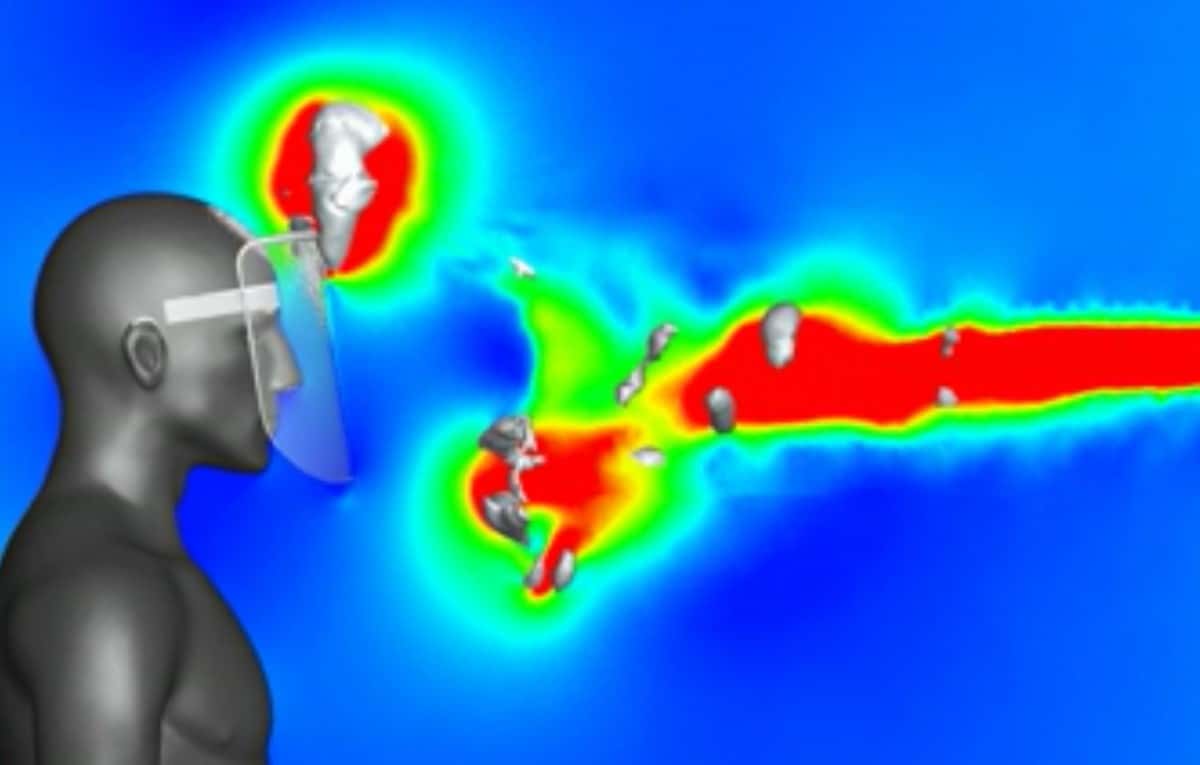
Vortex rings created when a person sneezes can transport virus particles to the noses of people wearing face shields – according to fluid dynamics simulations done by Fujio Akagi and colleagues at Fukuoka University in Japan. Their research reveals how these complex flows allow air-carried particles to enter the gaps between a shield and its wearer’s face. Their discovery exposes a key weakness in existing protective equipment and could lead to face shield designs that are better at diverting airflows away from wearers.
When fluids (liquids and gases) are fired at high velocity through a circular aperture such as the mouth or a nostril, swirling vortex rings can be created. As well as concentrating and focussing particles emitted in a sneeze or cough, these rings can also gather and transport particles that happen to be in the surrounding air.
Due to the COVID-19 pandemic, people are using protective equipment that aims to prevent this type of virus spread. For many healthcare and service workers, transparent face shields are a popular choice, owing to their increased comfort compared with face masks. Previously, fluid dynamics simulations have been used to study how these shields can reduce airflows generated by their wearers during sneezing. So far, however, there has been little work done on how effective face shields are at protecting wearers from the coughs and sneezes of others.
One metre sneeze
Akagi’s team did computer simulations of the airflow surrounding a person wearing a popular design of face shield. The person is exposed to the sneeze of a person standing 1 m in front of them. The team discovered that high-velocity vortex rings can reach the top and bottom edges of the shield within just 1 s. At this point in time, the wearer’s breathing can draw particle-carrying air into the narrow space between the shield and their face.

Droplets created by speech could contribute to COVID-19 spread, new study suggests
If the timing of the sneeze’s arrival is synchronized with inhalation, the simulations reveal that over 4% of the particles carried by the vortex ring can reach the vicinity of the wearer’s nose – significantly enhancing their risk of infection. Therefore, without additional protection like a face mask, they concluded that face shields are not highly effective for preventing the spread of COVID-19.
With this weakness exposed, Akagi’s team hope that their results will help guide the development of standards for protective measures against the spread of the virus. In the future, they hope to study how vortex ring flows are altered in different ways by face shields with different shapes. This work could soon lead to optimized shield designs that prevent users from inhaling particles, without the need for any additional protection.
The research is described in Physics in Fluids.
